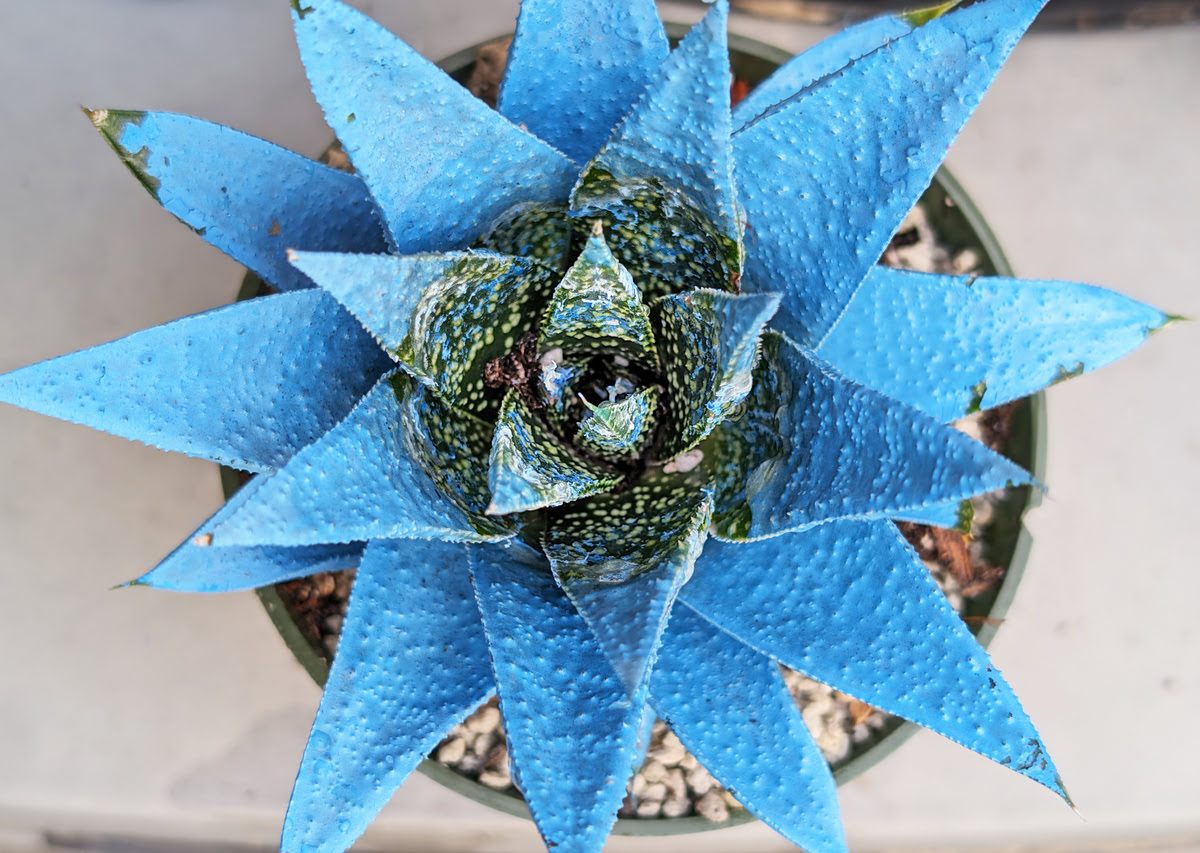Home>Gardening Basics>Understanding Soil>How To Remove Roots From Soil


Understanding Soil
How To Remove Roots From Soil
Published: February 14, 2024
Learn how to effectively remove roots from soil and gain a deeper understanding of soil composition with our comprehensive guide.
(Many of the links in this article redirect to a specific reviewed product. Your purchase of these products through affiliate links helps to generate commission for Chicagolandgardening.com, at no extra cost. Learn more)
Table of Contents
- Introduction
- Why do you need to remove roots from soil?
- Tools and materials needed
- Step-by-step guide on removing roots from soil
- Assess the root system
- Loosen the soil around the roots
- Remove small roots manually
- Cut larger roots
- Use a shovel to dig out stubborn roots
- Dispose of the roots properly
- Tips and precautions
- Conclusion
Introduction
Welcome to the fascinating world of soil! It is the foundation of life on Earth, providing essential nutrients and support for plants to grow and thrive. Understanding soil is crucial for any gardener or landscape enthusiast, as it plays a crucial role in determining the success of your plants. One important aspect of soil management is ensuring that it is free from any obstructions, such as roots. In this article, we will delve into the topic of removing roots from soil and provide you with a step-by-step guide on how to accomplish this task effectively.
Whether you are starting a new garden bed or trying to rejuvenate an existing one, removing roots from the soil is crucial. While roots are important for plants to obtain nutrients and water, they can also become problematic if they are too dense or obstructive. Removing roots from the soil helps to prevent competition for resources and can create a healthier environment for your plants to grow.
Before we dive into the practical steps of root removal, let’s discuss the tools and materials you will need for this task. Having the right equipment on hand will ensure a smooth and efficient process.
Why do you need to remove roots from soil?
Removing roots from the soil may seem contradictory to the idea of nurturing plants and promoting healthy growth. However, there are several important reasons why you might need to remove roots from the soil in your garden or landscaping project.
First and foremost, removing roots helps to prevent competition for essential resources. When roots become too dense or spread extensively, they can compete with the plants you are trying to cultivate for valuable nutrients, water, and sunlight. This competition can hinder the growth and development of your desired plants, leading to stunted growth or even plant failure.
In addition to resource competition, invasive or aggressive root systems can also pose a threat to the integrity of structures and utilities. Tree roots, for example, have the potential to damage foundations, underground pipes, or sidewalks if left unchecked. Removing these roots ensures the long-term stability and safety of your property.
Furthermore, removing roots from the soil allows you to have better control over the planting area. By eliminating unwanted roots, you can create the ideal environment for your desired plants to flourish. This is especially important when starting a new garden bed or redesigning an existing one.
In some cases, removing roots may also be necessary for the health of the plants themselves. When plants become overgrown or develop dense root systems, they can become stressed and vulnerable to diseases or pests. By selectively removing roots, you can promote better airflow, drainage, and overall plant health.
Now that we understand the importance of removing roots from the soil, let’s proceed to the next section where we will discuss the tools and materials you will need for this task.
Tools and materials needed
Before you embark on the task of removing roots from soil, it is essential to gather the necessary tools and materials. Having the right equipment will make the process more efficient and ensure that you can effectively remove the roots without causing damage to the surrounding soil or plants. Here are the tools and materials you will need:
- Gloves: To protect your hands from sharp or prickly roots, it is important to wear a pair of sturdy gardening gloves. These will also provide you with a better grip on the roots as you remove them.
- Hand trowel: A hand trowel with a sharp, narrow blade is useful for loosening the soil, digging around roots, and removing smaller roots. Look for one with a comfortable handle grip for ease of use.
- Pruning shears: For cutting through larger roots, a pair of pruning shears or loppers will come in handy. Choose a sturdy pair with sharp blades that can handle cutting through woody roots.
- Shovel: A sturdy shovel is essential for digging out stubborn or deeply buried roots. Look for a shovel with a strong handle and a sharp blade to make the digging process easier.
- Wheelbarrow or garden waste bag: As you remove the roots, it is important to have a container to collect and dispose of them properly. A wheelbarrow or garden waste bag can be useful for transporting the roots to a designated compost area or disposing of them in an appropriate manner.
- Watering can or hose: Water can be a helpful tool in loosening the soil around roots and making them easier to remove. Have a watering can or hose nearby to dampen the soil if needed.
- Protective eyewear: Depending on the size and location of the roots, it may be necessary to wear protective eyewear to shield your eyes from any debris that may be dislodged during the removal process.
- Knee pads or kneeling mat: To protect your knees and provide comfort while working close to the ground, consider using knee pads or a kneeling mat.
- Container for storing collected roots (optional): If you plan to repurpose or reuse the roots, having a container to store them temporarily can be beneficial.
Having these tools and materials ready will ensure that you have a smooth and organized root removal process. Now that you are equipped with the necessary equipment, let’s move on to the next section where we will provide a step-by-step guide on removing roots from soil.
Step-by-step guide on removing roots from soil
Now that you have gathered the necessary tools and materials, it’s time to dive into the step-by-step process of removing roots from soil. Follow these instructions to ensure a successful and efficient root removal process:
- Assess the root system: Start by assessing the root system you wish to remove. Determine the extent of the root network and identify any large or stubborn roots that may require extra effort to remove.
- Loosen the soil around the roots: Use a hand trowel to gently loosen the soil around the roots. This will make it easier to extract them without damaging surrounding plants or the soil structure.
- Remove small roots manually: Carefully pull out smaller roots by hand or use the hand trowel to dislodge them from the soil. Take your time and ensure that you remove as much of the root system as possible.
- Cut larger roots: For larger roots that are too thick to remove by hand, use pruning shears or loppers to cut them into smaller sections. Make clean cuts to minimize damage and create manageable pieces.
- Use a shovel to dig out stubborn roots: For stubborn or deeply buried roots, a shovel can be your best friend. Dig around the root, starting a few inches away from the base, and gradually work your way underneath it to loosen the soil. Use leverage to lift the root out of the ground.
- Dispose of the roots properly: Once you have removed the roots, dispose of them properly. You can collect them in a wheelbarrow or garden waste bag for composting or disposal at a designated area.
Remember to take breaks if needed and stay hydrated throughout the process. Removing roots from soil can be a physical task, so it’s important to pace yourself and prioritize your safety.
By following these step-by-step instructions, you can effectively remove roots from soil without causing unnecessary damage to your garden or landscape. Now that you have successfully removed the roots, let’s move on to the next section where we will share some tips and precautions to keep in mind.
Assess the root system
Before diving into the process of removing roots from the soil, it is essential to assess the root system you are dealing with. This step will help you determine the extent of the root network and identify any potential challenges you may face. Here’s how to assess the root system effectively:
- Observe the overall growth: Take a close look at the plants and observe their overall growth pattern. Are the plants healthy and vibrant, or do they show signs of stress or limited growth? Understanding the health of the plants can give you insights into the root system’s impact on their development.
- Inspect the soil near the plants: Gently dig around the base of the plants and examine the soil. Look for signs of dense or intertwined roots that may be competing for space and resources. Thick clusters of roots can hinder the growth of surrounding plants and need to be addressed.
- Identify large or stubborn roots: Look for any prominent roots that may be causing issues or obstructing the growth of other plants. These roots may require more effort to remove and may need tools like pruning shears or a shovel for extraction.
- Consider the overall landscape: Take into account the layout and design of your garden or landscape. Are there any structures, utilities, or nearby plants that may be affected by the removal of roots? Evaluate the potential risks and plan accordingly to minimize any potential damage or disruption.
By thoroughly assessing the root system, you will have a clearer understanding of the scope of the root removal project. This knowledge will guide your approach and help you make informed decisions throughout the process. Now that you have assessed the root system, let’s move on to the next step: loosening the soil around the roots.
Loosen the soil around the roots
Once you have assessed the root system, the next step in removing roots from soil is to loosen the soil around the roots. This step is essential as it allows for easier extraction of the roots without causing damage to the surrounding plants or soil structure. Here’s how to effectively loosen the soil:
- Choose the right time: It is best to perform this task when the soil is slightly moist but not overly wet. This ensures that the soil is easier to work with and minimizes the risk of compacting it further. If the soil is dry, consider watering it lightly before starting.
- Use a hand trowel: With a hand trowel, gently dig around the base of the plants and the roots. Start a few inches away from the base and work your way around, loosening the soil as you go. Be careful not to damage the main stem or the surrounding plants.
- Loosen the soil around densely packed roots: If you encounter densely packed roots, gently pry them apart with the trowel or use your fingers to separate them. This will create space and make it easier to remove the roots later on.
- Work in a circular motion: Gradually work your way around the roots in a circular motion, loosening the soil as you go. Take your time and be thorough, making sure that all areas around the roots are loosened.
- Avoid excessive force: While it is important to loosen the soil, avoid using excessive force that could damage the roots or surrounding plants. Take a gentle approach and be mindful of the delicate balance between removing roots and preserving the health of the garden.
By loosening the soil around the roots, you create a foundation for easier root removal in the subsequent steps. This step also helps to improve aeration and drainage in the soil, promoting healthier plant growth overall. Now that the soil is loosened, we can move on to the next step: removing small roots manually.
Remove small roots manually
With the soil loosened around the roots, it’s time to remove the smaller roots manually. This step is important for clearing out the root system and creating more space for the desired plants to thrive. Follow these steps to effectively remove small roots:
- Wear gloves: Put on a pair of sturdy gardening gloves to protect your hands from any sharp or prickly roots.
- Gently pull out smaller roots: Carefully and gently pull out the smaller roots by hand. Start from the base of the plant and work your way outwards. Use your fingers to sort through the loosened soil and locate the roots. Tug them lightly and gradually to avoid damaging the plant or tearing off the roots.
- Use a hand trowel: If some roots are firmly embedded in the soil, use a hand trowel to dislodge them. Slide the trowel under the root and gently pry it away from the soil. Take care not to disturb the surrounding plants or the main stem of the plant you want to keep.
- Patience is key: Removing small roots can be a time-consuming task, especially if the root system is extensive. Exercise patience and work diligently to ensure that you remove as much of the smaller roots as possible.
- Inspect the soil: As you remove the small roots, inspect the soil for any remaining root fragments. Gently sift through the soil with your fingers or use a hand trowel to ensure that you have thoroughly cleared out the roots.
Taking the time to manually remove small roots helps to minimize competition for resources and creates a healthier environment for your desired plants. Continue to the next step for cutting larger roots that cannot be removed manually.
Cut larger roots
During the root removal process, you may encounter larger roots that are too thick or stubborn to be removed manually. In this step, we will discuss how to cut these larger roots effectively and safely:
- Select the right tool: Choose a pair of pruning shears or loppers that are sharp and sturdy. This will make it easier to cut through the thicker and woody roots.
- Identify the larger roots: Locate the larger roots that cannot be removed manually. These are typically thicker and more challenging to handle.
- Position the tool: Place the pruning shears or loppers close to the base of the root that you want to cut. Make sure the blades are properly aligned and have a clear view of the area.
- Make clean cuts: Using a firm grip, apply pressure to the pruning shears or loppers and make a clean cut through the root. Repeat if necessary for larger or thicker roots. Avoid using excessive force or twisting the tool, as this can damage the root and surrounding plants.
- Dispose of the cut roots: Collect the cut root sections and place them in a container or wheelbarrow for disposal. Properly handle and dispose of the roots according to local guidelines and regulations.
By cutting larger roots, you will be able to remove sections that are too challenging to extract manually. This process allows you to eliminate any obstructions and create a better growing environment for your desired plants. However, it’s important to note that cutting roots should be done judiciously to avoid impacting the overall health and stability of the plants. Continue on to the next step to learn how to use a shovel to dig out stubborn roots.
Use a shovel to dig out stubborn roots
In some cases, you may encounter stubborn or deeply buried roots that cannot be easily removed by hand or by cutting. This is where a shovel becomes an invaluable tool in the root removal process. Here’s how to effectively use a shovel to dig out stubborn roots:
- Select the right shovel: Choose a sturdy shovel with a sharp blade and a long handle. This will provide you with the necessary leverage and strength to dig out the stubborn roots.
- Dig around the root: Start by digging a trench around the root, a few inches away from the base. Work your way underneath the root, loosening the soil as you go. Take caution to avoid damaging any nearby plants or structures.
- Use leverage: Once you have dug around the root, position the shovel underneath it and apply upward pressure to lift the root out of the ground. Use your body weight and leverage to your advantage, taking care not to strain yourself.
- Repeat if necessary: If the root is particularly large or firmly entrenched, you may need to dig deeper or remove surrounding soil to fully expose the root. Repeat the process, gradually working your way around the root until it can be lifted out completely.
- Dispose of the roots: Place the extracted roots in a designated container or wheelbarrow for disposal. Compost them if appropriate, or dispose of them according to local guidelines and regulations.
Using a shovel allows you to tackle more challenging root removal situations. It provides the necessary leverage and digging power to extract stubborn roots effectively. However, caution must be exercised to avoid causing unnecessary damage to other plants or structures in the process. With the stubborn roots removed, it’s time to move on to the final step: proper disposal of the extracted roots.
Dispose of the roots properly
Once you have successfully removed the roots from the soil, it is important to dispose of them properly. How you handle and dispose of the extracted roots can impact the overall cleanliness and health of your garden. Here are some guidelines for proper disposal:
- Composting: If the roots are free from diseases or pests, consider composting them. Chop the roots into smaller pieces to expedite the decomposition process. Mix them with other organic matter in your compost pile and allow them to break down over time.
- Curbside pickup or green waste disposal: Check with your local municipality to see if they offer curbside pickup or green waste disposal services. They might have specific guidelines on how to bundle or package the roots for collection.
- Municipal composting facility: If you don’t have a compost pile or curbside pickup option, contact your local municipality or composting facilities to inquire about drop-off locations. Some cities have dedicated composting facilities that accept organic waste, including plant roots.
- Landfill disposal: As a last resort, when no other options are available, you may have to dispose of the roots in your regular household waste. Bag the roots securely and place them in your trash bin for regular waste collection.
- Avoid spreading invasive species: If the roots you removed belong to invasive plant species, it is crucial to prevent their spread. Do not dispose of them in natural habitats, as they can easily take root and colonize new areas, causing environmental damage.
- Reuse or repurpose: Depending on the condition of the roots, you may be able to repurpose or reuse them. For example, you can use larger root sections as decorative elements in landscaping or crafts. Get creative and see if there are any unique uses for the extracted roots.
By disposing of the roots properly, you ensure the cleanliness and health of your garden or landscaping project. Proper disposal practices also contribute to environmental sustainability. Choose the best option available to you, considering factors such as composting, municipal services, and the nature of the removed roots. With the roots disposed of appropriately, you have successfully completed the root removal process!
Tips and precautions
Removing roots from soil can be a challenging task, but with the right approach and precautions, you can ensure a successful and safe process. Here are some helpful tips and precautions to keep in mind:
- Wear protective gear: Always wear sturdy gloves and, if necessary, protective eyewear when handling roots. This will protect your hands from sharp or prickly roots, as well as prevent any debris from getting into your eyes.
- Start with smaller roots: Begin by removing smaller roots before moving on to larger or more stubborn ones. This allows you to clear out the easier sections first, making the overall process more manageable.
- Take breaks when needed: Root removal can be physically demanding. Take breaks as needed to rest and stay hydrated. Overexertion can lead to fatigue, which may compromise your ability to remove roots effectively.
- Be mindful of nearby plants: Take care not to damage or disturb the root systems of nearby plants while removing roots. Pay attention to the depth and direction of your digging to minimize disruption to the surrounding vegetation.
- Dispose of invasive species responsibly: If you are dealing with roots from invasive plant species, be vigilant in their proper disposal. Prevent their spread by avoiding composting or disposing them in natural habitats. Consult local guidelines to ensure responsible disposal.
- Assess the health of the plants: While removing roots, evaluate the overall health of the plants. If you notice signs of diseases or pests, take appropriate measures to treat the plants and prevent further infestation or spread.
- Follow local regulations: Familiarize yourself with any local regulations on root removal or disposal. Some areas may have specific guidelines or restrictions on how roots should be handled or where they can be disposed of.
- Consider professional help if needed: If you are dealing with a large root system or complex root removal scenario, it may be beneficial to seek the assistance of a professional landscaper or arborist who can provide expert guidance and perform the task safely.
By following these tips and precautions, you can navigate the root removal process with confidence and minimize any potential risks or complications. Remember, safety and care should always be top priorities when working in your garden or landscape. With these considerations in mind, you can successfully remove roots from the soil and create an optimal environment for your plants to thrive.
Conclusion
Removing roots from soil is an important task to create a healthy and thriving garden or landscape. It helps prevent competition for resources, maintains the structural integrity of surrounding structures, and ensures the overall well-being of plants. By following the step-by-step guide and utilizing the necessary tools and materials, you can effectively remove roots from the soil.
Remember to assess the root system, loosen the soil, remove small roots manually, cut larger roots, use a shovel for stubborn roots, and dispose of the roots properly. Take precautions by wearing protective gear, being mindful of nearby plants, and following local regulations. If needed, seek professional help for complex root removal situations.
With proper root removal, you create an optimal environment for your desired plants to flourish. By eliminating obstructions and reducing competition for resources, you can ensure their healthy growth and development. Whether you are starting a new garden or rejuvenating an existing one, proper root removal is an essential step towards creating an ideal growing environment.
So, roll up your sleeves, gather your tools, and embark on the root removal journey. With patience, care, and the knowledge shared in this article, you’ll be well-equipped to successfully remove roots from the soil and create the garden of your dreams.






